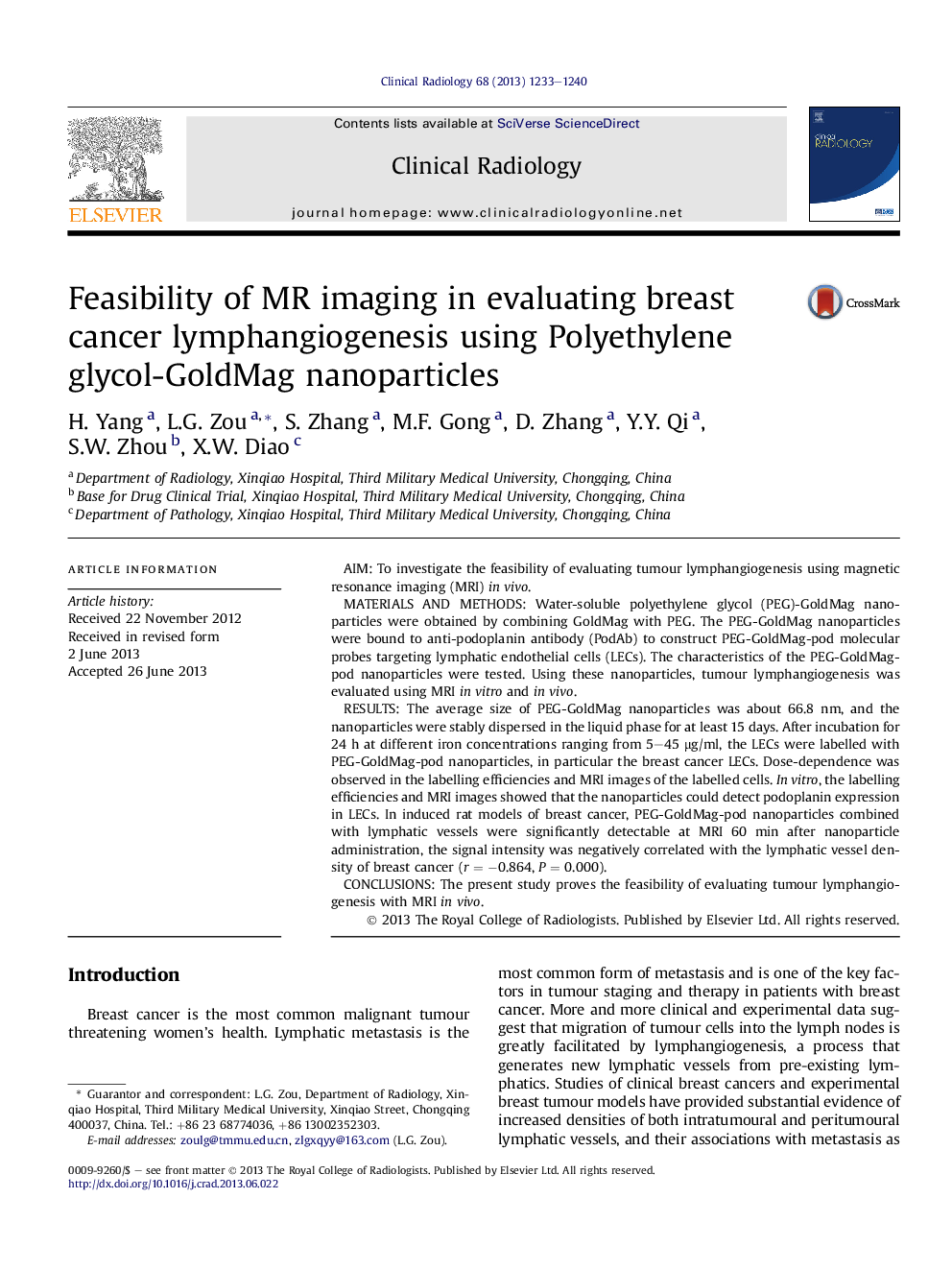| Article ID | Journal | Published Year | Pages | File Type |
|---|---|---|---|---|
| 3982368 | Clinical Radiology | 2013 | 8 Pages |
AimTo investigate the feasibility of evaluating tumour lymphangiogenesis using magnetic resonance imaging (MRI) in vivo.Materials and methodsWater-soluble polyethylene glycol (PEG)-GoldMag nanoparticles were obtained by combining GoldMag with PEG. The PEG-GoldMag nanoparticles were bound to anti-podoplanin antibody (PodAb) to construct PEG-GoldMag-pod molecular probes targeting lymphatic endothelial cells (LECs). The characteristics of the PEG-GoldMag-pod nanoparticles were tested. Using these nanoparticles, tumour lymphangiogenesis was evaluated using MRI in vitro and in vivo.ResultsThe average size of PEG-GoldMag nanoparticles was about 66.8 nm, and the nanoparticles were stably dispersed in the liquid phase for at least 15 days. After incubation for 24 h at different iron concentrations ranging from 5–45 μg/ml, the LECs were labelled with PEG-GoldMag-pod nanoparticles, in particular the breast cancer LECs. Dose-dependence was observed in the labelling efficiencies and MRI images of the labelled cells. In vitro, the labelling efficiencies and MRI images showed that the nanoparticles could detect podoplanin expression in LECs. In induced rat models of breast cancer, PEG-GoldMag-pod nanoparticles combined with lymphatic vessels were significantly detectable at MRI 60 min after nanoparticle administration, the signal intensity was negatively correlated with the lymphatic vessel density of breast cancer (r = −0.864, P = 0.000).ConclusionsThe present study proves the feasibility of evaluating tumour lymphangiogenesis with MRI in vivo.
